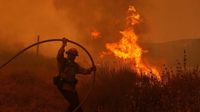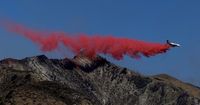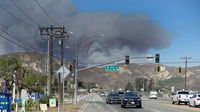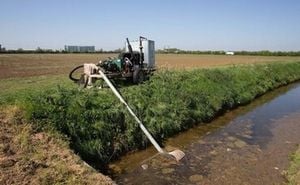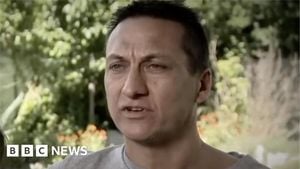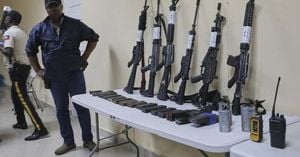On Thursday afternoon, August 7, 2025, a fast-moving wildfire known as the Canyon Fire erupted north of Los Angeles, sending a wave of chaos and urgency rippling through communities perched along the Ventura-Los Angeles county border. What began as a spark around 1:30 p.m. quickly grew into a monstrous blaze, devouring more than 4,800 acres by nightfall with zero percent containment, according to Cal Fire and the Ventura County Fire Department.
The fire’s ferocity stunned even seasoned firefighters. At its peak, the Canyon Fire was burning through land at a rate faster than a football field every two seconds—enough to consume an area the size of New York City’s Central Park in less than 25 minutes, as reported by CNN. "It’s a very dynamic situation," Ventura County Fire Department spokesperson Andrew Dowd told the Associated Press, citing the combination of hot, dry weather, steep and rugged terrain, and tinder-dry fuel as the perfect storm for explosive wildfire growth.
By late Thursday, the fire was burning just south of Lake Piru, a reservoir nestled in the Los Padres National Forest, and edging dangerously close to Lake Castaic—a region still recovering from the Hughes Fire in January, which scorched about 15 square miles in just six hours and forced 50,000 people to flee or prepare for evacuation. The memory of that disaster was fresh in the minds of local residents and officials as evacuation orders and warnings began to spread like the flames themselves.
Mandatory evacuation orders were issued for a patchwork of zones: PIRU-14, PIRU-01, LAKP-05, LAKP-06, LAKP-04, CAS-VALVERDE, CAS-OAKCANYON, CAS-HASLEY, and CAS-ROMERO, as detailed by KABC and CAL FIRE. Warnings stretched even further, covering CAS-INDUSTRY, CAS-GOLDENSTATE-B, CAS-SLOAN, CAS-GREENHILL, CAS-CAMBRIDGE, CAS-HILLCREST, LAKP-01, and LAKP-02. The Val Verde zone, initially under an order, was downgraded to a warning as conditions shifted, but officials cautioned residents not to let their guard down.
In Los Angeles County alone, about 2,700 residents were evacuated with 700 structures under direct evacuation orders, while another 14,000 residents and 5,000 structures sat under evacuation warnings, according to the Ventura County Fire Department and CNN. In a separate count, the Associated Press noted that as many as 4,200 residents and 1,400 structures were under orders, with 12,500 more residents under warnings—numbers that reflect the rapidly changing and chaotic nature of wildfire response.
Ventura County’s evacuation zones were described as relatively unpopulated, but that didn’t mean the risk was any less real. Fifty-six people were evacuated from the Lake Piru recreation area, and fire officials were quick to establish resources for both people and animals. Large animals could be taken to Pierce College in Woodland Hills, while small pets were directed to the Castaic Animal Care Center and Agoura Hills Animal Shelter. For those needing shelter, the College of the Canyons East Gymnasium in Santa Clarita opened its doors, with parking lots 5, 6, and 7 designated for evacuees.
Los Angeles County Supervisor Kathryn Barger, whose district encompasses many of the threatened communities, issued a stark warning. "Extreme heat and low humidity in our north county have created dangerous conditions where flames can spread with alarming speed. If first responders tell you to leave, go—without hesitation," Barger said in a statement shared by multiple outlets including the AP and KABC. Barger also issued a local emergency proclamation to streamline coordination and bring in additional firefighting resources, underlining the seriousness of the situation.
The weather was no friend to firefighters or residents. Thursday marked the hottest day of the year for much of the region, with nearby Santa Clarita soaring to 102 degrees Fahrenheit and Los Angeles’ Van Nuys neighborhood hitting 103. The National Weather Service warned of continued hot, dry conditions with highs near 100 degrees and humidity dipping into the mid-teens. Wind gusts up to 25 mph were recorded on Thursday, and more were expected through the weekend as the heat wave persisted.
Firefighting efforts were immense but challenged by the terrain and weather. At least 250 personnel were on the ground, supported by seven helicopters and additional air support, according to LAist and the Ventura County Fire Department. By Thursday night, the fire remained 0% contained, and no structures had been reported destroyed. Thankfully, there were no deaths or injuries as of Friday morning.
The Canyon Fire was not the only major blaze taxing California’s emergency response. The Gifford Fire in Central California had ballooned to 155 square miles (402 square kilometers) by Thursday night, making it the state’s largest wildfire of the year. With just 15% containment, the Gifford Fire forced road closures along State Route 166 and injured at least four people. Smoke from this fire drifted south and east, fouling air quality across Southern California and even into Nevada—Las Vegas experienced its worst air quality in over two years on Monday, CNN reported.
Other states were not spared: Arizona’s Dragon Bravo Fire, ignited by a lightning strike on July 4, had grown to become one of the largest in the state’s history, destroying dozens of structures and even creating its own weather. Utah’s Monroe Canyon Fire, meanwhile, had burned nearly 65,000 acres, marking it as the state’s largest wildfire of the year.
As the weekend approached, wildfire risk remained elevated across inland California. The National Interagency Fire Center and California’s fire department both warned that August and September are typically the most dangerous months for wildfires. Persistent drought, high grass loads, and weakening coastal moisture are fueling the threat in Southern California, and the relentless heat wave only adds to the danger.
For residents, the message from officials was unambiguous: heed evacuation orders, prepare for rapidly changing conditions, and don’t try to ride out the fire. Resources were made available for those displaced, and guides for recovery—ranging from navigating insurance claims to coping with poor air quality—were widely shared by local media and government agencies.
With no end to the heat in sight and the state’s fire season just entering its most perilous phase, communities across California are bracing for what could be a long, dangerous summer. The Canyon Fire, with its explosive growth and unpredictable path, serves as a stark reminder of the growing risks posed by a warming climate, parched landscapes, and the ever-present specter of wildfire in the American West.
